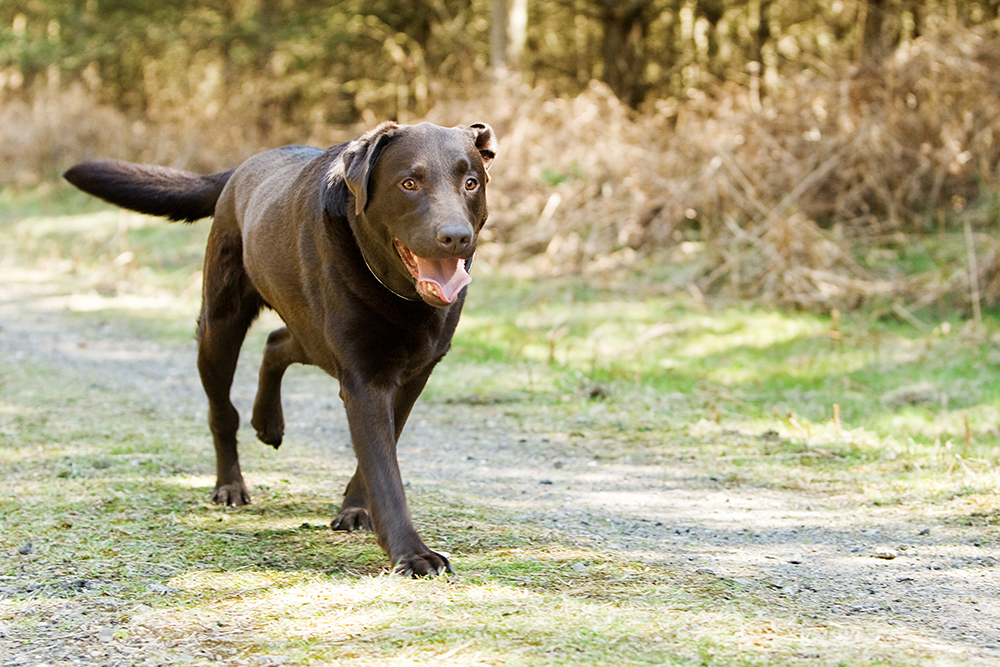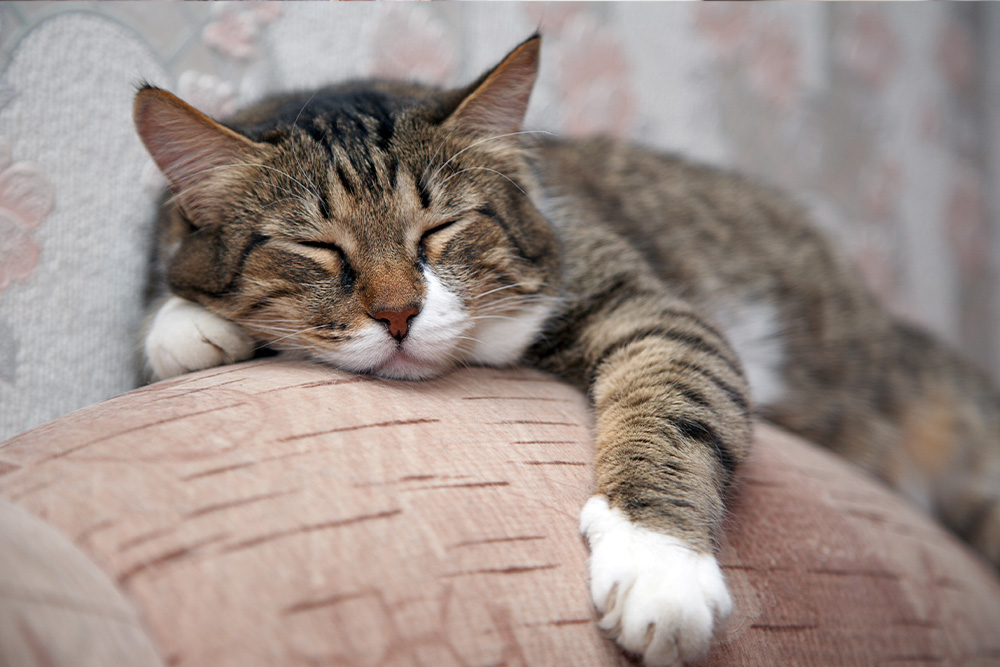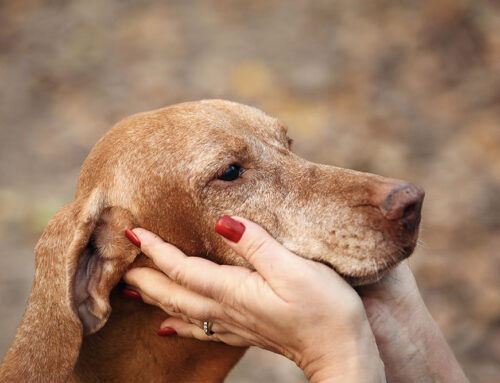Senior Pet Comfort: Supporting Dogs and Cats in Their Golden Years
Your senior pet may move a little slower, avoid the stairs, or nap more than before. But is that normal? Not always. The challenge for pet owners is knowing what is normal aging and what could signal pain, illness, or cognitive decline.
At Central Kentucky Veterinary Center, our team helps pets age with comfort, dignity, and joy through their golden years. We offer advanced imaging, integrative therapies, pain management, and rehabilitation to support mobility, relieve discomfort, and improve quality of life at every stage.
Understanding the Needs of Senior Pets
Recognizing Age-Related Changes in Pets
As dogs and cats enter their golden years, physical and behavioral changes become more noticeable. Some, like graying fur or slower movement, are part of the natural aging process. Others, such as stiffness, limping, or appetite loss, often point to underlying pain or disease.
Common pet pain signs include panting at rest, reluctance to climb stairs, difficulty rising, and changes in posture or activity. Cats, in particular, are skilled at hiding discomfort. They may sleep more, skip grooming sessions, or stop jumping to their favorite spots. Even small shifts in daily behavior can be meaningful. A senior dog that lags behind on walks or a cat that withdraws from family interaction may be showing early signs of arthritis or cognitive dysfunction. Recognizing these clues allows for early treatment and better long-term comfort.
The Importance of Regular Veterinary Visits
Routine veterinary visits are the cornerstone of senior pet health. Older pets benefit from exams every six months to monitor for hidden disease and evaluate pain, organ function, and nutrition.
Preventive testing for senior pets includes blood work, urinalysis, and imaging to detect subtle changes in the kidneys, liver, or thyroid before symptoms appear. Early diagnosis gives your veterinarian time to slow progression and improve quality of life.
Between visits, report any sudden changes right away, such as fast breathing at rest, persistent vomiting, difficulty urinating or defecating, collapse, or a rapid decline in mobility.
Ensuring Mobility and Comfort
Arthritis is one of the most common and debilitating issues in senior pets. Dogs may limp or tire quickly, while cats often become quiet and reclusive. Cats may also stop grooming when it hurts too much.
Medical and Integrative Care for Senior Pets at Central Kentucky Veterinary Center
Modern pain management works best when layered thoughtfully. Biologic therapies such as Librela for dogs and Solensia for cats target osteoarthritis pain at the nerve level and can reduce the need for daily oral medications. Many pets show improved willingness to move, stretch, and participate in family activities once pain is better controlled.
Rehabilitation, massage, and acupuncture further enhance recovery. Our hospital offers canine rehabilitation programs that include underwater treadmill therapy and tailored exercise routines to strengthen joints safely. These sessions emphasize controlled range of motion, core stability, and balance work that translate to fewer slips and more confident movement at home.
For many pets, laser therapy helps reduce inflammation and stimulate tissue healing after flare-ups or procedures. We also offer acupuncture, chiropractic care, and stem cell therapy to help decrease pain. Your veterinarian will design a customized plan that may combine biologics, targeted exercise, anti-inflammatory support, and integrative modalities to maintain steady comfort rather than chasing ups and downs.
What you can do daily: warm up joints with a brief leash walk before activity, use gentle leash guidance to slow pacing, schedule several short movement sessions instead of one long outing, and finish with a soft towel massage to reduce post-exercise stiffness.
Creating a Pet-Friendly Home Environment

Simple home modifications can dramatically improve your senior pet’s safety and independence. Home modification tips for cats include adding ramps, soft bedding, and accessible litter boxes with low sides. Position water stations throughout the home to encourage hydration and place litter boxes on each floor to decrease stair use.
For dogs, home modifications include non-slip rugs to prevent falls on hardwood floors and raised food bowls that reduce neck and back strain. Ensure beds are supportive and easy to enter. Assistive tools can transform mobility for aging pets. Assistive devices for dogs with arthritis include harnesses for support, orthopedic braces, and ramps for easier access to vehicles or furniture.
Nutrition and Weight Management for Aging Pets
Nutrition plays a pivotal role in comfort and longevity. Senior pets often require diets with moderate calories and high-quality, easily digestible protein. Maintaining muscle mass supports balance and joint health, so include gentle strength work in your rehabilitation plan and feed to preserve lean tissue. Guidelines for choosing food for seniors recommend nutrient-rich formulations with antioxidants and omega-3s.
Weight loss and obesity can both be issues for senior pets. Cats especially tend to lose weight with common age-related diseases like chronic kidney disease and hyperthyroidism, while dogs and cats with reduced activity may gain fat and lose muscle. Obesity increases joint pain and systemic inflammation. Learning to body condition score your pet can guide appropriate portion sizes and treat limits.
Your veterinarian may recommend therapeutic diets, measured feeding tools, or joint-supporting supplements such as glucosamine and chondroitin. Recheck weights every two to four weeks during a nutrition plan so adjustments happen early.
Cognitive and Behavioral Health
Recognizing and Managing Cognitive Decline
Cognitive dysfunction in senior dogs and cats often mirrors dementia in humans. Pets may seem disoriented, pace at night, vocalize more, or forget familiar routines. Establishing predictable schedules, offering gentle enrichment like food puzzles or scent games, and modifying the environment for safety can ease confusion. Integrating soft lighting, ramps, and stable floor textures helps pets move confidently. Supplements and medications may also help slow cognitive decline when started early.
Balancing Comfort and Quality of Life
Comfort is physical and emotional. Many families struggle with knowing when a pet’s quality of life is declining. When pets no longer enjoy eating or interactions with family, struggle with mobility, or have uncontrolled pain, the Quality of Life Scale can guide thoughtful decisions about ongoing care. Repeating the scale weekly helps you see the overall trend rather than one hard day.
Our doctors will discuss realistic goals, home modifications, and pain-control strategies, and when appropriate provide supportive hospice planning. For families facing difficult decisions, our team offers compassionate guidance, including support through pet loss services.
Your Pet’s Golden Years Start with Proactive Care
Supporting your senior pet means noticing subtle shifts and acting early. Whether your dog is slowing down or your cat struggles to groom, our team at Central Kentucky Veterinary Center is here to help.
We offer advanced pain management, rehabilitative therapies, and integrative care options that restore comfort and function. Central Kentucky Veterinary Center’s AAHA accreditation reflects our commitment to excellence in every aspect of preventive and senior care. Our doctors use modern imaging and individualized treatment planning for the safest, most effective results.
Don’t wait for small changes to become crises. Call Central Kentucky Veterinary Center at (502) 863-0868 or contact us online to schedule your senior pet’s comprehensive evaluation. Together, we can ensure their golden years are healthy, happy, and pain-free.







Leave A Comment